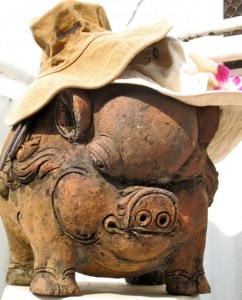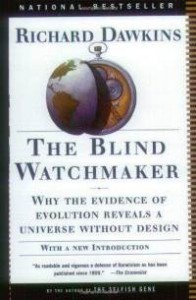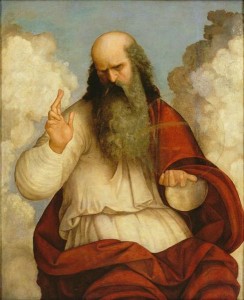In the last post, we looked at stories as products of a process. The writer doesn’t proceed like this: “I have this story in my head, and now I’m going to record it in written form.” The text isn’t a given that merely awaits transcription. It’s often—perhaps usually—the product of a writing activity. It didn’t exist before being realized in that activity, not even in the mind of the writer. In such cases the writer doesn’t adopt the role of Divine Clockmaker, the creationist’s standard argument for how this story we call reality has been structured. What looks as if it must have been the product of deliberate design in the Beginning is instead a product of evolution.
The writing activity, we may suggest, is typically a conversation with the page, a process wherein the text evolves in the back-and-forth give-and-take of proposition and critique, experiment and revision.
To perform this trick successfully, you have to wear two hats: that of the writer/editor and that of the reader/editor.
You don one hat and then the other, role-playing on some level—switching back and forth and back and forth as the prose passage develops. The writer proposes a word, a phrase, a sentence, a paragraph. At each step, the writer swaps between the standpoint of the writer—proposing—and the reader or editor—critiquing. At each step of the way, the writer proposes a change and the editor—the same person, wearing a different hat—either accedes or doesn’t. And so on. In principle, this applies to virtually any written text. Even a shopping list, as we saw in the last post. 
If the mutation-selection evolutionist analogy doesn’t work for you, try the following instead. Good fiction might be described as a dream that appears on paper, and the process of writing could be compared to the process of precipitating, or depositing, that dream on the page. From this perspective, we may think of the story as something like a pearl — a bit of existential grit wrapped and wrapped in words to ease the irritation, whatever its source. And the result is sometimes beautiful, the bit of sand which inspired the whole process quite hidden. And, as in a dream, perhaps even the writer can’t interpret the story without help.
Many books about writing recommend a largely mechanical approach to plotting. And perhaps that’s the only way you can really try to teach someone how to construct a novel.
If we view the writer’s job as that of precipitating a dream that may be enjoyed collectively, however, of gradually producing a pearl around that bit of emotional or intellectual grit that somehow seems pregnant with a story, then there may be a danger that the mechanical approach will close the writer off to the process of discovery—and to that blessed state where the Muse finally intervenes, and the characters and situations themselves take on a life of their own, surprising even the writer himself. (That blessed state will be the topic of a later post.)
Maybe it’s better to embark on that “voyage of discovery” so many veterans warn you against. This may not be the best way to write a genre novel, but it could be the best way to write a literary novel, one that more certainly approximates the shaggy disorder and surprise of real life.
Realistically, the best approach may be one that falls between the two:
* Always try to extend a working plot outline ahead as far as you can see at any given moment. But remember that it’s only a working outline, and is subject to radical change at any time.
* Don’t panic if you can’t always see you’re going. Writing a novel has to be a daily job, to some extent, where you plod along, spinning those words, not letting the uncertainties get you down or the frustrations get your blood pressure up. This is akin to the nearly universal craving to know how your life is going to turn out—the future hasn’t arrived yet, and you have to live in the here and now, just as the story you’re writing hasn’t been written yet, and you have to get on with the business of writing it.
Rather than a Divine Clockmaker, perhaps the writer is more like Richard Dawkins’ Blind Watchmaker (though Dawkins’ account is arguably only partial). E.L. Doctorow has famously expressed much the same thing in another way:
“It’s like driving a car at night. You never see further than your headlights, but you can make the whole trip that way.” 
In a later post, we’ll meet the Muse, and argue for an optimum writerly modus operandi. But first, just as a break, we’ll interpose a couple of other, non-writerly matters.
Illustration, above: “God the Father,” Ludovico Mazzolino (1480–1530) . This file is from Wikimedia Commons and may be used by other projects.


1 thought on “Two hats: Darwinian yarning”
Comments are closed.